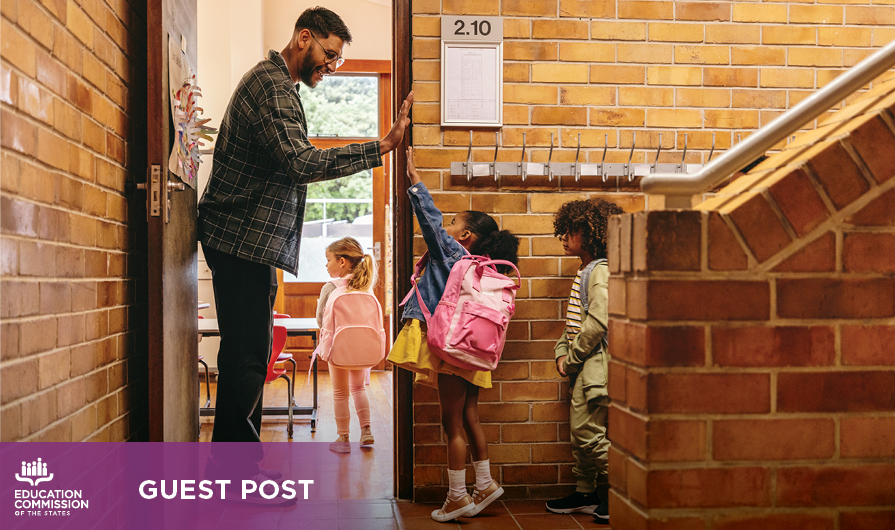A rise in the number of school shootings over time has increased focus on school safety, adding to other longstanding school safety concerns, like fighting or bullying. In addition to immediate physical harms, school violence can have long-lasting effects that undermine students’ engagement and mental health.
There is widespread agreement that addressing safety threats in school settings should be a priority — something Congress signed off on with the passage of the Bipartisan Safer Communities Act in 2022.
In a recent Learning Policy Institute report, we examined the evidence behind school safety improvement strategies, which fall into two broad approaches: increasing physical security and building supportive school communities.
Improving Physical Safety and Building Supportive School Communities
Our report found that strategies to increase physical security, including using metal detectors, employing school resource officers or arming school staff, were largely ineffective at preventing firearm incidents or reducing school violence. Strategies like controlling building access and badging staff and visitors were not studied.
Building supportive school communities to protect against school violence is increasingly considered an effective strategy. Indeed, strategies such as increasing access to mental health resources, adopting social and emotional learning practices, implementing restorative practices, and adopting structures and practices that foster strong relationships have been found to significantly reduce school violence and improve school climate.
While mental health services and counseling have been shown to benefit students and schools, schools' capacity to provide these services is strained. On average, public schools have one counselor for every 408 students, one school psychologist for every 1,127 students and about 42% of schools offer mental health treatment services.
In co-sponsorship with Education Commission of the States and AASA, The School Superintendents Association, LPI hosted a webinar series to learn directly from state and district policymakers, educators and experts about effective policy approaches and high-impact investments that can help create schools that foster student safety and well-being. The first of these webinars covered how schools can create both physically and psychologically safe learning environments for students, while the second focused on the use of restorative practices.
Key lessons from these resources suggest that state policymakers could improve school safety by:
- Increasing student access to mental health and counseling resources. Arizona is using Project AWARE funds to develop mental health service infrastructure; increase youth, family and school mental health service engagement; and provide training to increase mental health literacy and reduce stigmas.
- Investing in integrated student support systems and community schools to connect students and families to needed supports. For example, California saw significant improvements in school safety after investing in strategies to reduce suspensions, adopt restorative practices, expand mental health programs and create community schools that more easily connect students to needed support services. Kansas launched the Kansans Can School Redesign Project in 2017 to take a more integrated, personalized approach to student learning, build mutually beneficial partnerships with families and communities, and support schools in developing and implementing redesign plans.
- Adopting structures and practices that foster strong relationships. Educators in New York City Schools and Oakland Unified School District shared the positive impacts of creating strong, relationship-centered school communities and investing in restorative practices. These impacts include increased levels of trust, safety and belonging among students and staff and stronger connections between schools and the families and communities they serve.
States can also adopt high-impact strategies through:
- Preparing all school staff to better support student well-being. States can revise educator preparation program approval standards, licensure standard competencies and in-service professional learning and development to support staff understanding of student well-being. States can also establish guidance for the appropriate use of school mental health staff, paraprofessionals and other school staff, as well as criteria for hiring, training and continuous evaluation of their performance and roles.
- Conducting equity reviews of school safety measures and their impact on discipline outcomes. To identify bias in implementation, schools, districts and states can review disciplinary action data to track whether school safety measures are associated with increased use of exclusionary discipline and police referrals, particularly for Black students and students with disabilities. States and districts can also support schools in conducting equity reviews to track whether measures have unintended consequences.
All students deserve a safe and healthy school environment where they can thrive. With meaningful investments using the new influx of federal funds, states and school districts have an opportunity to foster these environments for their students.




